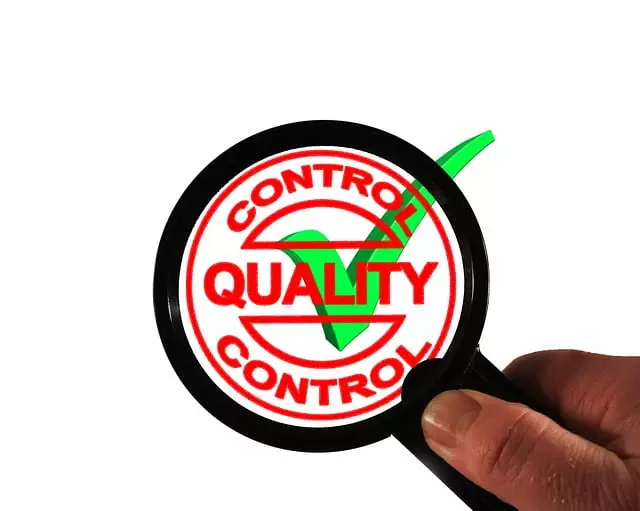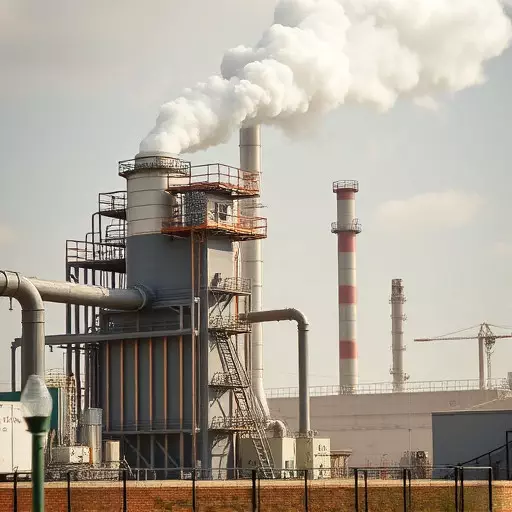Industrial boilers in densely populated areas pose significant risks to air quality and respiratory health due to emissions of pollutants like PM, NOx, SO2, and VOCs. To address these issues, implementing effective emission control technologies, including advanced dust collection solutions like bag filters and scrubbers, is crucial for enhancing both air quality and boiler efficiency. These solutions mitigate harmful gases, ensuring compliance with environmental regulations and providing sustainable air quality solutions for industrial sites.
Industrial boilers play a critical role in various industries but often contribute significantly to air pollution through emissions. This article explores comprehensive strategies to mitigate these impacts, focusing on understanding industrial boiler emissions, their sources, and effects on the environment. We delve into innovative air quality solutions tailored for industrial sites, emphasizing effective dust collection techniques. Additionally, we review cutting-edge emission control technologies that go beyond traditional methods, paving the way for cleaner, more sustainable industrial practices.
- Understanding Industrial Boiler Emissions: Sources and Impact
- Air Quality Solutions for Industrial Sites: A Comprehensive Approach
- Emission Control Technologies: Innovative Strategies for Dust Collection and Beyond
Understanding Industrial Boiler Emissions: Sources and Impact
Industrial boilers are significant contributors to air pollution and respiratory health issues in densely populated areas near industrial sites. Understanding the sources and impact of their emissions is crucial for developing effective air quality solutions for industrial sites. Boilers release a multitude of pollutants, including particulate matter (PM), nitrogen oxides (NOx), sulfur dioxide (SO2), and volatile organic compounds (VOCs), which can cause smog, acid rain, and respiratory diseases.
Dust collection solutions are among the essential emission control technologies used to mitigate these issues. These systems capture and filter out fine particles before they enter the atmosphere, improving both air quality and boiler efficiency. Additionally, modern emission control technologies, such as selective catalytic reduction (SCR) for NOx reduction and flue gas desulfurization (FGD) for SO2 removal, play a pivotal role in reducing industrial boiler emissions, fostering a cleaner and healthier environment for nearby communities.
Air Quality Solutions for Industrial Sites: A Comprehensive Approach
Maintaining optimal air quality around industrial sites is a multifaceted challenge that requires a comprehensive approach. Air quality solutions for industrial sites must address not just visible emissions like smoke and steam, but also invisible pollutants such as particulate matter, nitrogen oxides, and volatile organic compounds (VOCs). By integrating diverse strategies, businesses can significantly reduce their environmental footprint.
Effective dust collection solutions are a cornerstone of this effort. Advanced filtration systems, coupled with regular maintenance, capture and contain airborne particles before they dissipate into the surrounding atmosphere. Additionally, emission control technologies like scrubbers and filters play a crucial role in mitigating noxious gases and harmful substances. These measures not only enhance local air quality but also ensure compliance with stringent environmental regulations.
Emission Control Technologies: Innovative Strategies for Dust Collection and Beyond
Industrial boilers play a significant role in various industries, but their emissions have raised environmental concerns. This has spurred the development and adoption of advanced emission control technologies to mitigate these issues. One of the primary focuses is on air quality solutions for industrial sites, particularly in enhancing dust collection solutions.
Innovative strategies now extend beyond simple dust collection. Advanced filtration systems, such as bag filters and electrostatic precipitators, capture fine particles more effectively. Additionally, wet scrubbers and dry scrubber technologies are employed to reduce noxious gases like nitrogen oxides (NOx) and sulfur dioxide (SO2). These emission control technologies not only ensure cleaner air but also contribute to a sustainable future by minimizing the environmental impact of industrial operations.


